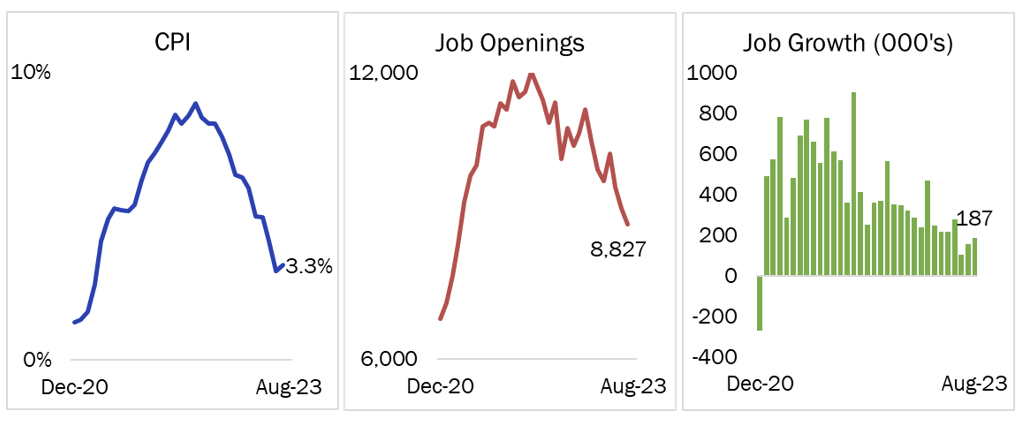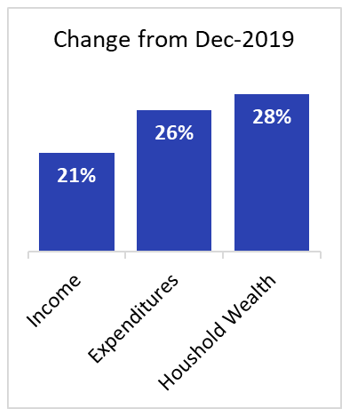Once in a Blue Supermoon
Tim Hoyle, CFA, Chief Investment Officer
thoyle@haverfordquality.com
Last Wednesday’s full moon was, according to the New York Times, a gem in the night sky. It is rare for a blue moon and supermoon to coincide[1], and according to NASA, the next blue supermoon will not occur until January 31, 2037.
We could be in the midst of a rarely seen economic blue supermoon. The historically-elusive soft-landing the FOMC has hoped to orchestrate is showing up in the data. Inflation is down significantly from its peak, while job growth has remained positive, and job openings have declined. Despite significantly higher interest rates, we have yet to witness slowing demand for housing; low inventory is supporting home values. While there are pockets of weakness in Corporate America, notably concentrated in the retail sector, earnings have broadly exceeded expectations. This retail weakness may be a harbinger of a consumer that is feeling stretched by inflationary pressures and reductions in government assistance.

Source: Haverford, FactSet
Last month, consumer spending increased by 0.8%, while incomes increased by only 0.2%. Post pandemic, the consumer has been outspending aggregate income. While unsustainable in the long-term, spending can outpace income in the intermediate term. Savings and household wealth can support spending. To neutralize pandemic distortions, the accompanying chart shows the growth in spending and income from 2019 levels. Since then, aggregate spending has increased 26%, outpacing income growth of 21%.
Spending growth will have to slow relative to incomes in the coming years. If the gap closes gradually, we will likely look back on this period and describe it as “sticked-the-soft-landing.” On the other hand, an abrupt pullback in spending could cause a post-landing stumble. As back-to-school shopping transitions into holiday spending we will gain more insights on the consumers’ trajectory in the coming months.

Source: FactSet Research Systems
[1] A blue moon describes the second of two full moons in a single month, which occurs every once every two or three years. A supermoon – a full moon that coincides with perigee, the closest that the Moon comes to Earth in its elliptical orbit – also occurs once every couple of years.
